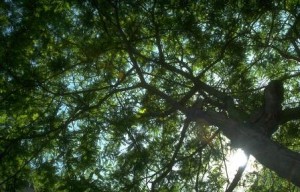 Marlborough – Sudbury Valley Trustees (SVT) and the city of Marlborough Conservation Commission (MCC) are embarking on a critical land stewardship project to restore pitch pine-scrub oak barrens to the Desert Natural Area.? This is a 12-acre area which straddles land owned by SVT in Memorial Forest and city of Marlborough conservation land.? The first phase of the project will involve cutting and shredding small-to-medium trees and all shrubs from this area, followed by a prescribed burn.
Marlborough – Sudbury Valley Trustees (SVT) and the city of Marlborough Conservation Commission (MCC) are embarking on a critical land stewardship project to restore pitch pine-scrub oak barrens to the Desert Natural Area.? This is a 12-acre area which straddles land owned by SVT in Memorial Forest and city of Marlborough conservation land.? The first phase of the project will involve cutting and shredding small-to-medium trees and all shrubs from this area, followed by a prescribed burn.
SVT and the MCC invite you and other members of the community to an informational presentation Thursday, Nov. 8, from 7 to 9 p.m., at the Assabet River National Wildlife Refuge Visitor Center, 680 Hudson Rd., Sudbury. Learn about pitch pine-scrub oak habitats and about the specifics of the planned restoration project at the Desert Natural Area.
Also, a site walk will be held Nov. 10, from 10 a.m. to noon. Meet at the parking lot at the corner of Concord Road and Hemenway Street/Hemenway Street Extension in Marlborough. This walking tour of the first phase 12-acre area will enable participants to view exactly what will be happening on the ground.
A full project description, answers to frequently asked questions, and links to additional information can be found at the Desert Natural Area Habitat Restoration web page at www.svtweb.org/DesertNaturalArea. The site will be updated with new information as the project progresses.
The Desert Natural Area is known for its well-drained, sandy soils in which you will find oak and white pine woodlands with patches of pitch pine-scrub oak woods – a nationally imperiled habitat. Pitch pine-scrub oak barrens were once much more widespread at the Desert, maintained by periodic fires.? The barrens habitat provides homes for birds such as eastern towhee, prairie warbler, and whip-poor-will, which have been experiencing population declines in recent years.? Whip-poor-wills were recently listed as a species of Special Concern in Massachusetts. The sandy soils and wetlands also provide great homes and nesting grounds for turtles.
This habitat has been in decline at this site due to fire suppression and lack of disturbance. Historically fire is a natural occurrence in pine barrens, and the community is fire adapted.? Pitch pine, for example, has several adaptations due to its close association with areas experiencing frequent fire.? Its thick bark protects the living tissue and buds from being damaged by fire. Fire actually stimulates the resurgence of young healthy vegetation. Scrub oak and huckleberry, for example, sprout readily from their root crowns.? Certain plants will not germinate without being scorched by fire.? The cones of some evergreen trees, like pitch pine, must be exposed to high temperatures to release their seeds.
After years of lying dormant under layers of accumulated pine needles and forest debris, fire dependent native plant species are able to return after the fire. Thinning of the overstory also allows more sun to reach the seeds of these plants.? In addition, fire creates ash which releases nutrients into the soil resulting in a lush growth of plants for a few years after the fire.
The use of prescribed fire in habitat restoration achieves a higher quality result than the use of mechanical means, such as mowing and cutting of trees, alone. The use of prescribed fire has the very important advantage of reducing the fuel load in the forest and therefore also reducing the risk of an uncontrolled wildfire. In addition to improving public and firefighter safety by reducing the chance of a wildfire, a controlled burn provides training opportunities for local fire departments in wildfire control.
Prescribed fire is a controlled burn used in habitat management that is planned, ignited and managed by professional fire managers.? It is one of the most effective tools for restoring healthy ecosystems while avoiding the environmental damage that can be caused by unplanned wildfire.
For additional questions, contact either Priscilla Ryder, Conservation Officer,? city of Marlborough, at 508-460-3768 or [email protected], or Laura Mattei, Director of Stewardship, Sudbury Valley Trustees, at 978-443-5588 ext. 134 or [email protected].
Sudbury Valley Trustees is a regional land trust that conserves land and protects wildlife habitat in the Concord, Assabet, and Sudbury river basin for the benefit of present and future generations.











